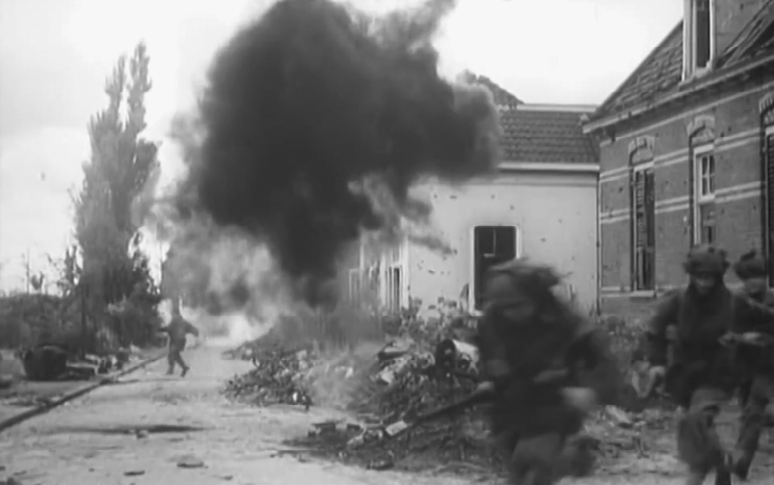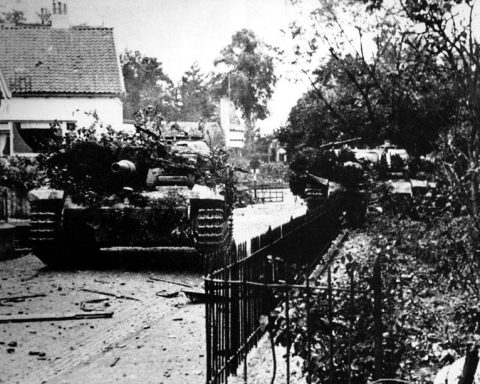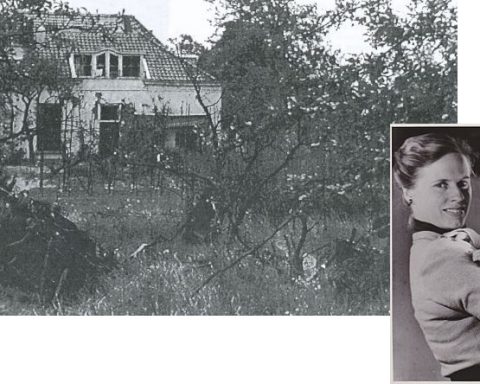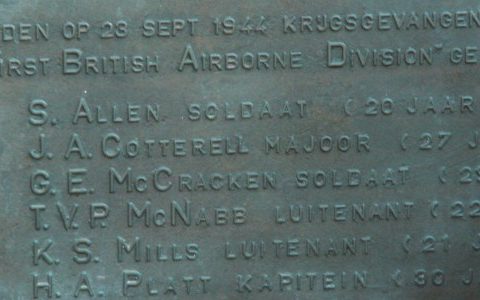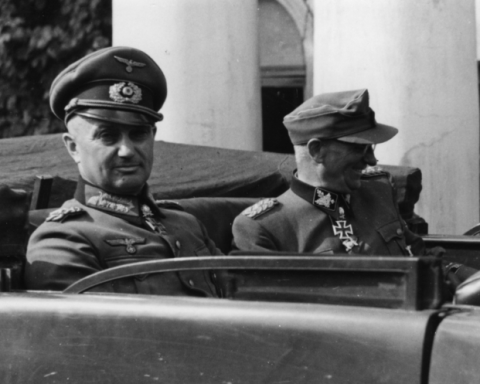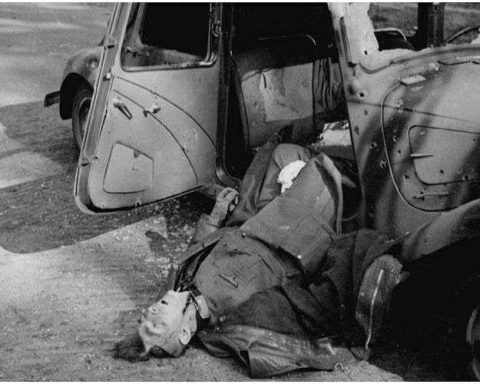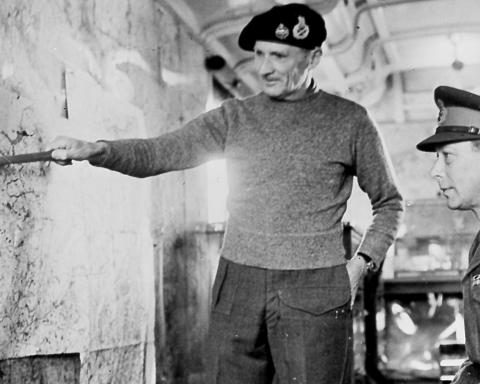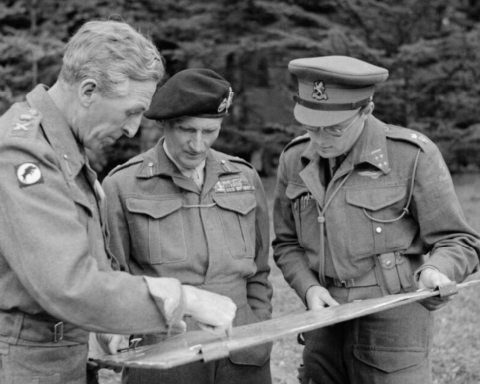On September 17, 1946, exactly two years after Operation Market Garden started, the British movie ‘Theirs is the Glory’ premiered in London. The film, starring British airborne veterans, was shot between the ruins of Arnhem and Oosterbeek in the summer of 1945 and is a unique document about the Battle of Arnhem.
The movie, you can watch it on this site, tells the course of the Battle of Arnhem from the perspective of the British soldiers who fought in Arnhem and Oosterbeek.
Glass plate
The film starts with showing images of destroyed Arnhem and Oosterbeek from 1945. Then the story returns in time to September 1944 and chronologically tells the course of the fighting. The movie ends with the British paratroopers retreating over the Rhine.
That crossing was not recorded in Oosterbeek, but filmed in England. In the summer of 1945, the flood plains of Oosterbeek were still full of mines. Shooting on location in Oosterbeek was considered too dangerous.
Filming in the vicinity of the Rhine Bridge in Arnhem was also complicated. The Rhine Bridge was bombed after the Battle of Arnhem. Many houses around the Rijnbrug were also completely destroyed. The lack of the Rhine Bridge was a problem that was circumvented by means of a trick.
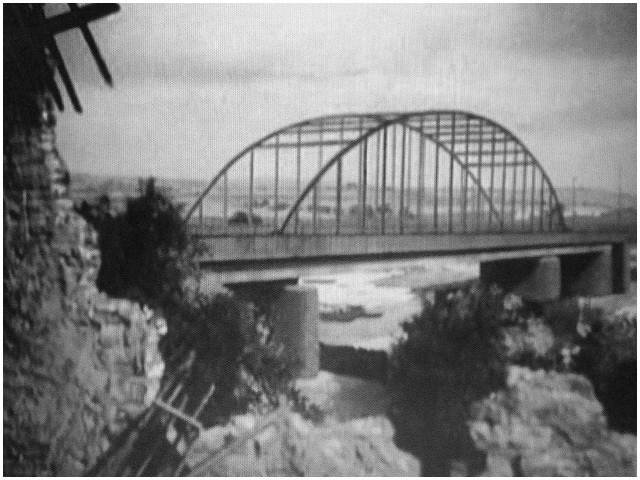
The Rhine Bridge was painted on a glass plate that was held in front of the camera, so that it seemed as if the Rhine Bridge was still in place. The filmmakers had no alternative for the ruined Eusebius church. In a few shots in the movie the destroyed Eusebius Tower is seen.
In addition to the surroundings of the Rhine Bridge, the filmcrew also made shots in the Elisabeth Gasthuis. During the first days of the Battle of Arnhem, the hospital was the most important medical care post for all British paratroopers. The shots could be shot in the Elisabeth Gasthuis itself because the hospital was relatively undamaged, despite the fighting in the area during the battle.
Foxholes
In Oosterbeek they mainly filmed in the vicinity of the Old Church on Benedendorpseweg. The church and surroundings were an important British stronghold during the fighting in September 1944. In the church, Major Lonsdale, now in the role of actor, once again delivered the speech he had given during the fighting to motivate his men.
The text of the speech was written on a door that was placed outside the camera frame as a reminder to Lonsdale. The door with the speech can still be seen when you visit the old church.
Next to the church in Oosterbeek is the rectory where Kate ter Horst cared for British wounded during the fighting in September 1944. Kate ter Horst had just returned from their evacuation address in Friesland with her husband and children. She was asked by the British to star in the movie.
Ter Horst initially refused because she thought it was too much honor to have a role in the movie, but she was convinced by the British veterans and, like the British paratroopers, she played herself in the film.
During the recordings in Oosterbeek, the British airbornes discovered a damaged German tank. The tank had been hit by a PIAT anti-tank gun during the fighting, and the German crew had fled their damaged tank at the time.
The British discovered that the damage to the tank was not as bad as it seemed. After a few hours of tinkering, the British managed to get the tank working again. The tank could then be used for filming to make the shots extra realistic.
In addition to the Old Church, the Hartenstein hotel where the British headquarters were located was used as well for the movie. All foxholes in the immediate vicinity of Hartenstein were still present and could be used for different scenes.
Claim
During the filming, the filmmakers discovered that there was a damaged Dutch diesel train near the destroyed railway bridge near Oosterbeek. “Nice!” Thought the director. The train was set on fire, which resulted in spectacular images. However, those images have not been used in the film.
The train was property of the Dutch Railways and they were ‘not amused’ their train was destroyed. The NS had planned to repair the train. The loss of the train was a great loss for the Dutch Railways.
A lawsuit followed and the film company was forced to pay substantial compensation to the Dutch Railways. It was therefore also decided not to use the filmed material in the movie.

